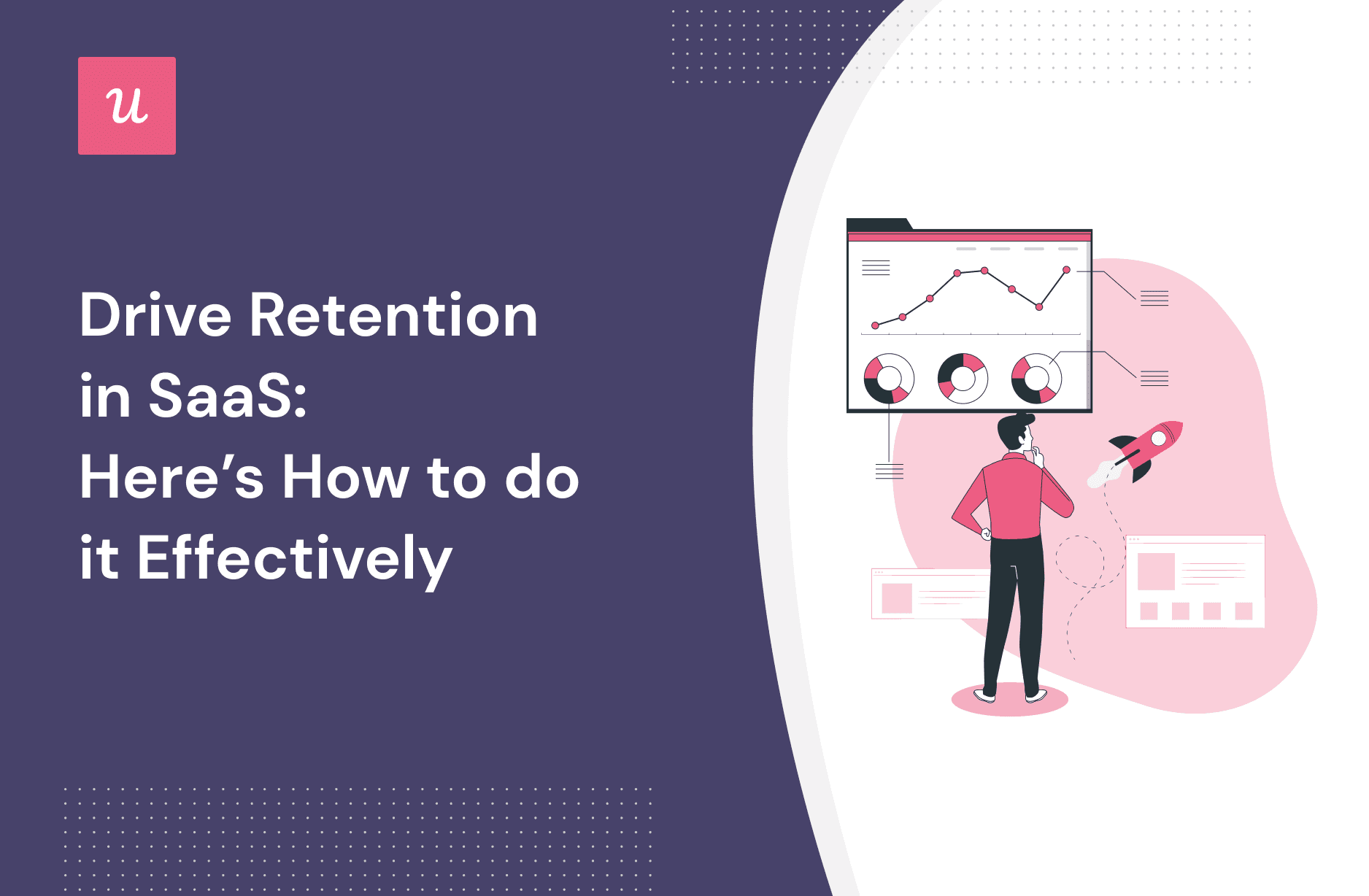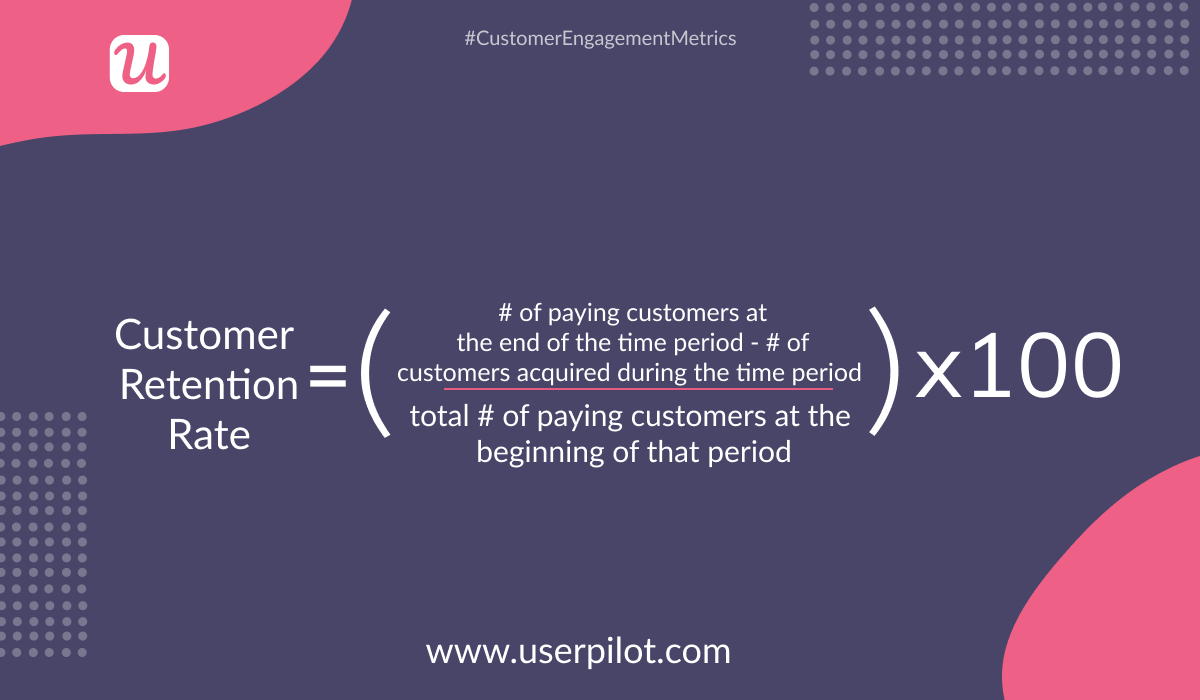
Tired of churn and want to drive retention for your brand?
There’s just one secret: keep the customer happy and satisfied at every point in their journey.
That sounds basic, but it can get complicated as your customer base grows. And it doesn’t matter what systems or tools you use; you’ll struggle if user satisfaction isn’t the bedrock of your customer retention strategy. Read on as we explore ways to keep users happy and retain them.
Get The Insights!
The fastest way to learn about Product Growth, Management & Trends.
What is customer retention?
Customer retention is a company’s ability to create systems and experiences that drive repeat business. It ensures new customers stay with your product and remain loyal over a long period of time.
One common example of customer retention is hyper-personalization. This retention strategy delivers tailored content and experiences to a narrow target audience. These customers feel understood and are less likely to leave the business as their needs are being met. Hyper-personalization is just one of the many customer retention examples that truly makes a difference for SaaS companies.
How to calculate your customer retention rate (CRR)
There’s no point in learning how to drive retention if you don’t have a way to track your results, determine where you are, and see what progress you’re making.
CRR comes to the rescue. You can calculate the retention rate with the following formula:(The total number of customers at the end of a period – the number of customers acquired during this period/ the number of customers at the beginning) x 100.
Here’s a pictorial representation:

Let’s conduct a simple exercise, shall we?
Imagine you started Q1 with 1000 customers. By the end of that quarter, 250 of those were no longer customers but you also acquired 500 new customers, leaving you with 1250 customers.
Your customer retention rate will be: ((1250 – 500)/1000) * 100 = 75%.
That’s a pretty solid rate. Continue with it, keep your user acquisition channels active, and your ARR will thank you.
It’s worth noting that the customer retention rate is the most common but not the only metric to measure retention. Other metrics include customer churn rate, customer lifetime value, CSAT, etc.
Customer support vs. customer success: Which one is responsible for retention?
The short answer: both.
Customer support and success teams work together to keep customers happy and improve retention. But there’s a slight difference between them: customer success is proactive and collaborative, while support is more technical and reactive.
Customer success teams improve retention through personalization, in-app guidance, customer behavior analysis, etc. The customer support team does it through self-serve resources, quick resolution rates, and creating multichannel support.

The role of customer empathy in driving retention
Empathy is a key factor in building strong customer relationships.
Users don’t just stick with brands for transactional purposes. The truly loyal ones have an emotional connection with the business, and empathy helps you facilitate customer loyalty.
Empathy is simply about putting yourself in the customer’s shoes to understand their pain points and come up with realistic solutions. Once you imbibe empathy as a principle, you’ll naturally find creative strategies to solve customer problems. The next section shows you some ways to do that.
Proven strategies to drive retention in SaaS
All high-growth companies are doggedly committed to customer retention. They master not just the art of user acquisition but ensure their customers keep coming back.
And retention isn’t a fling; you need to have the right strategies and keep tracking your KPIs. We’ve outlined 17 customer retention strategies to guide you.
1. Refine the onboarding experience
Good onboarding helps users understand and gain value from your SaaS product, which is essential to making sure they stay with you.
How to create killer onboarding flows:
- Keep it simple. Seriously. You need the customer to reach their first aha! moment as soon as possible—that won’t be easy if you add unnecessary details to the flow.
- Welcome the user nicely and use different UI elements to communicate contextually.
- Keep in mind that onboarding isn’t a one-time project—it should be periodic with secondary onboarding and even tertiary. The image below shows the different onboarding stages and how they relate to the user journey.
- For mobile apps, extend these principles by creating targeted onboarding flows with engaging slideouts, carousels, and push notifications.

2. Make it engaging with gamification
The onboarding process can get boring pretty fast if you don’t add interactive elements. But with gamification, the process will be fun and will enhance product adoption. Customers will lose track of time because you’ve hooked them on getting the promised rewards.
Gamification rewards can be anything from points to badges for completing steps. Place them strategically in your product to boost user engagement and retention.

3. Make data work for you
A data-driven approach is necessary for brands to prosper in today’s market. It can reveal insights into your customers, show you what’s working and what’s not, help predict user behavior, etc.
Collect data through feedback surveys and by tracking user engagement. Then, analyze the results to make intelligent decisions on improving the customer experience.

4. Adapt to the customer experience lifecycle
Your efforts won’t yield much return if user experiences aren’t tailored to the right lifecycle stage.
The typical lifecycle for SaaS customers looks something like this: Reach → Acquisition → Conversion → Retention → Loyalty. Map out your product experiences according to each stage to smoothly transition users to the next step in their lifecycle.

5. Identify your user segments
Adapting to the lifecycle stages is not where your segmentation efforts should stop. There’s a lot more to consider: customer demographics, psychographics, behavior, account type, and more.
Choose which segmentation model(s) you’ll be using and dig deep to analyze each existing segment of your audience.
You can conduct advanced user segmentation based on in-app behavior or user sentiment using Userpilot.

6. Put personalization to work
People react better to personalized experiences, which increases your chances of maintaining their interest in your product for much longer. All the data and insights gained from the previous steps will enable you to create personalized user experiences and drive retention.
Product personalization can be done through in-app messages, feature recommendations, customized paths to secondary feature adoption, etc. Go for what you think will help the user experience more value and do their jobs better.
7. Learn to leverage feedback
Be that company that regularly hears customers out. But don’t just collect user feedback; share it with your team and make a plan to start acting on the insights gathered.
You can use microsurveys like NPS, CSAT, or custom ones to accurately measure user sentiment. Deliver your surveys in-app or through emails and do it contextually, so customers don’t dismiss them.

8. Diversify your content
Content (visual or written) is how you communicate with users, and regular, effective communication is necessary to retain customers.
Diversifying your content is essential since you have different audience groups with varying preferences. Some people prefer to read blogs, and others will relate better to podcasts or videos. In addition, content diversification also helps you attract customers faster.
However, don’t diversify blindly. Experiment with your audience to find the content formats that work best.
Ahrefs is a classic example of content diversification. The company repurposes its blog articles on YouTube to reach a different audience.

9. Use the right channels
In customer communication, the where and how are as important as the what, so make sure you’re on the right channels.
You’ll often need to use more than one channel to reach the broad spectrum of your audience—different customers have different platform preferences.
As you do that, ensure to be omnichannel in your approach by providing consistent, synchronized experiences across all your platforms. Doing this will give customers a better experience than when you approach each platform independently.

10. Make self-service easily accessible
Making self-service available when users need it will reduce churn and drive retention. What makes self-service so powerful is that it enables customers to solve basic problems without contacting a human agent.
In-app messages, chatbots, and knowledge bases are great examples of self-service you can take advantage of.

11. Organize customer communication
A customer communication calendar will help you to keep track of customer interactions and actively re-engage passive users.
This calendar should capture your daily, weekly, or monthly plan for keeping customers engaged. Depending on your need, your calendar can include email flows, seasonal offers, holiday campaigns, and any other ideas you’ll like to add.

12. Streamline team communication
The other side of the coin is team communication. Close internal collaboration is essential to creating a great customer experience and increasing retention. It’s easy for vital customer information to get lost if there’s no appropriate system for effective collaborations across departments.
Growth is easier when teams collaborate. For example, your support and product development teams can work together to ensure the end product you build aligns with customer needs and wants.
13. Make your job easier with the right tools
Sometimes what you need is not more employees to get the job done, but simply the right tools to improve your workflow. Equip your arsenal with the following:
- Support automation tools to help you provide instant customer service 24/7, which is essential to driving customer retention.
- CRM tools to help you organize processes across different communication channels and even departments within your company.
- User engagement tools like Userpilot to allow you to provide better in-product experiences and achieve more product activation as well as retention.

14. Delight customers
Only giving the bare minimum won’t lead to impressive retention rates. Customers will be excited when you go the extra mile to exceed their expectations.
There are no rules for customer delight; just think of what your customers will be genuinely happy about. This can be as simple as thank-you emails, discounts, gifts, birthday or holiday surprises, etc.

15. Set yourself apart from competitors
Users have a lot of options, so show them why they should choose you. Do this through dedicated comparison pages or creating blog posts that compare you against major competitors. This kind of content aims to project your product vision, build authority, and drive retention in the long run.
Caveat: be honest in your comparisons. Don’t lie about your product or other brands because that will only end up ruining your reputation.

16. Hone your email strategy
Email marketing is one of the best ways to nurture long-term customer relationships and improve retention. It’s also a good way to win back and re-engage churned users.
One of the best ways to succeed at email marketing is proper user segmentation. Don’t send general emails; segment your users based on journey stages and tailor your emails to their needs.

17. Set up a customer retention program
Have an effective customer retention program to reconnect with users on the edge of churn. You can use goal tracking to find inactive customers or users that have active accounts but not engaging as expected. Then reach out to them to know what’s wrong. You could also use special offers here to enhance retention.
And while you do that, don’t forget your loyal customers. Encourage them with customer loyalty programs and show your appreciation regularly.
Conclusion
Hopefully, this article has shed more light on SaaS customer retention strategy and how to get started with it.
Don’t hesitate to book a demo with us if you need help driving retention through immersive product experiences.
We’ll discuss how Userpilot can help you to:
- Engage customers and create better user experiences.
- Build in-app communication for onboarding new users and providing contextual guidance to existing customers.
- Send and measure feedback surveys with ease.







